What's New
Displaying results 2051 - 2060 of 4907
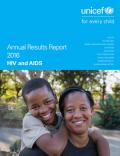
Resource | Publications,
The year 2016 represented a transition in many ways for the global HIV response. Some changes and developments were unequivocally positive, while the impact of others remains uncertain.
Significant gains were made in expanding access to and availability of services; coordinated, global action and attention; and efforts to develop and use innovative products and tools to address critical bottlenecks to effective HIV care.
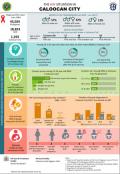
Resource | Fact Sheets,
This HIV Situation Brief provides situation information on the mode of HIV transmission, HIV knowledge, men who have sex with men, condom use, treatment, testing in the Philippines.
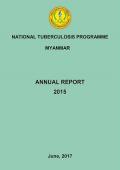
Resource | Publications,
National Tuberculosis Programme (NTP) is functioning with 17 Regional/State TB centers and 101 vertical TB teams. The NTP covered all 325 townships with DOTS strategy in November 2003 and all 330 townships including five new townships established in NayPyiTaw Union Territory in 2011. "Stop TB Strategy" was introduced in 2007 aiming to achieve the targets linked to the Millennium Development Goals (MDGs) by 2015.
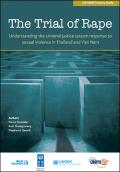
Resource | Publications,
This study, the first of its kind in the Asia-Pacific region, seeks to analyze how the varying criminal justice systems in Thailand and Viet Nam respond to reported cases of rape and sexual assault, and to identify the key institutional factors associated with the disposition of cases in these countries. In doing so, the study aims to understand where and how attrition of sexual violence cases occurs and identify strategic entry points for strengthening the administration of justice in this area.
The study does not aim to provide nationally representative data to measure or compare overall attrition rates. Rather, it seeks to identify key factors which can impact on attrition for the purpose of understanding how such attrition can be reduced.

Resource | Publications,
WHO guidelines issued on HIV prevention, diagnosis, treatment and care for key populations (8), and on HIV testing services (11) included annexes that presented examples of innovative programmes around the world that seek to increase access to vital health and supportive services for communities with the greatest vulnerabilities to HIV, and to protect the rights of those key populations. This compilation joins those two annexes, providing updated information and additional details on programmes when available, and considering the aspects of differentiated service delivery that are key to the success of these programmes.
The case examples included in this document have been submitted and described by the programmes themselves. WHO has not conducted evaluations of these programmes and their results. They have been included on the basis of a set of selection criteria for good practice examples of overcoming challenges and structural barriers to service provision for key populations.
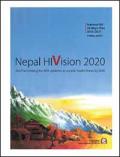
Resource | Publications,
Working alongside public health and other systems, community responses are critical to the success and sustainability of Nepal's response to HIV. Community responses are practical and therefore need to be innovative.
This National HIV Strategic Plan is an expression of Nepal's community engagement and community-led responses to tackle specific challenges in Fast-Tracking: engagement in advocacy and accountability for strategic investments; reaching and advocating for human rights of key populations; understanding social, cultural and other issues relevant to health and well-being; adherence support; demand creation; services delivery in the prevention-treatment continuum through community organizations and in-reach workers; navigators in health and other social services; and collaboration in relevant public-private partnerships through task-sharing. In short, the "identify, reach, recommend" paradigm of this National HIV Strategic Plan relies fully on us, the communities.
The National HIV Strategic Plan, to which communities have greatly contributed, calls on us to work in partnerships with the Nepali Government, the private sector and external development partners.
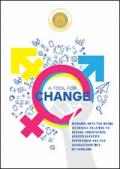
Resource | Publications,
In 2015, UNDP commissioned this study to analyze news media coverage of sexual orientation, gender identity and expression or sex characteristics (SOGISC) and lesbian, gay, bisexual, transgender and intersex (LGBTI) identities across media platforms in Thailand. The study has found that many Thai journalists lack knowledge and understanding regarding LGBTI people which often results in LGBTI people being presented in news media in a negative manner, differentiating them from how other people in Thai society are portrayed.
Thai media has the potential to be a powerful advocate for positive change in social attitudes, policies and programme and an effective tool for tackling stigma and discrimination. The hope is that this study will strengthen the role of media advocacy in creating an enabling environment for discussing the human rights of LGBTI people and issues of stigma and discrimination. This is essential if we are to achieve the shared goal of ensuring that 'no one is left behind'.
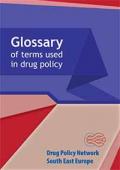
Resource | Tools,
Drug Policy Network South East Europe (DPNSEE) initiative for 2017 is creation of a glossary of terms related to the problem of drugs that we hope will contribute to better understanding the drug problem in more empathic manner. Glossary will be an alphabetical list of terms used in a domain of drug policy, with the definitions for those terms. It will contain explanations of concepts and terms related to the field of drugs and relevant related matters. The glossary should serve firstly to member organisations in a way that will help in process of harmonization of opinions and attitudes. Secondly, this material will serve a wider range of groups of people including policy makers, stakeholders, activists, the media, police, judiciary and others.
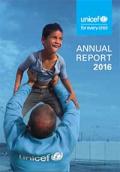
Resource | Publications,
This report details the results achieved by UNICEF for and with children worldwide in 2016. It covers the organization’s programme work, humanitarian action, partnerships and advocacy efforts in all strategic sectors, with an emphasis on reaching every child and accelerating progress for the most vulnerable and disadvantaged girls and boys. The report also highlights UNICEF’s innovations, its efforts to improve efficiency and effectiveness, and the stories of individual children and families directly affected by UNICEF’s work in the course of its 70th anniversary year.

Resource | Guidelines,
Achieving universal access to sexual and reproductive health (SRH) products and services is fundamental to empowering women and men with the tools to live healthy lives and fulfill their reproductive intentions. As a key component of Sustainable Development Goal (SDG) 3 – to ensure healthy lives and promote wellbeing for all at all ages – universal access to SRH products and services plays an important role in preventing unplanned pregnancies, reducing maternal and newborn mortality and controlling and ending the HIV epidemic.
The Guide for Promoting Sexual and Reproductive Health Products and Services for Men focuses on meaningfully engaging men and creating an enabling environment to increase men’s use of SRH products and services. Drawing on lessons learned from the promotion of male condoms, vasectomy, voluntary medical male circumcision (VMMC), HIV testing services (HTS) and sexually transmitted infection (STI) testing and treatment, the guide provides guidance, resources and examples of approaches that have increased men’s use of SRH products and services in a variety of settings.





